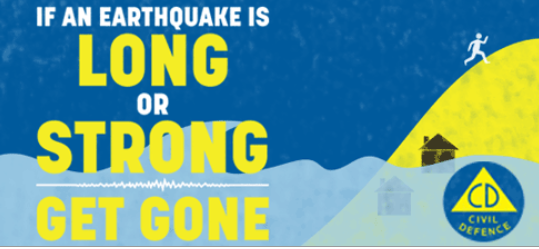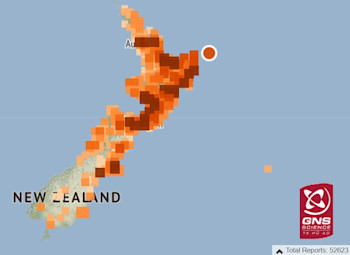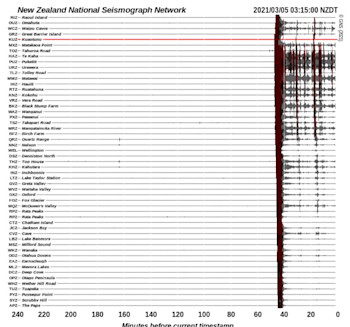
M7.3 Earthquake East of the North Island - Tsunami Threat Cancelled
Updated: Fri Mar 5 2021 6:47 AM
The National Advisory of tsunami activity is no longer in effect following a M7.3 earthquake east of the North Island.
The National Emergency Management Agency (NEMA) is the official agency for providing tsunami advisories and warnings for New Zealand.
NEMA [National Emergency Management Agency] and GNS Science have assessed that there is no longer a threat of tsunami activity following the magnitude 7.3 earthquake east of the North Island. People who have evacuated may now return to their homes.
The first detection of waves on East Cape occurred at about 3am, and at Great Barrier Island at about 3:40am.
Details: M7.3 Earthquake - East of the North Island
The earthquake was felt throughout New Zealand and GeoNet received over 52,000 felt reports.
Our network of seismographs clearly show the shaking from the mainshock, and aftershocks throughout New Zealand.
The earthquake is in a similar area to the M7.1 East Cape earthquake in 2016, an area familiar with larger earthquakes with 40 events over M5.0 in the past 10 years.
For a local-source tsunami which can arrive in minutes, there is not enough time for an official warning, it is important to recognise the natural warning signs and act quickly. Remember, LONG or STRONG, GET GONE.

If there is earthquake shaking, drop, cover and hold. Protect yourself from the earthquake first, then act as soon as the shaking stops.
If you are near the coast and experience any of the following:
- Feel a strong earthquake that makes it hard to stand up, or a weak rolling earthquake that lasts a minute or more.
- See a sudden rise or fall in water level.
- Hear loud and unusual noises from the water.
Move immediately to the nearest high ground or as far inland as you can, out of tsunami evacuation zones. Do not wait for official warnings.
Once you have evacuated, follow official advice from your local Civil Defence Emergency Management Group about when it is safe to return to tsunami evacuation zones. Do not return until an official all-clear message is given by Civil Defence Emergency Management.
Know what to do?
NEMA have a great website with information on what to do before, during and after a tsunami.
You can also search your address to find out if it is in a tsunami evacuation zone.
Has your property suffered damage?
If you’ve got damage from the recent tsunami, care for your whānau’s safety first, take photos of any damage, and call your private insurer.
Find out more about insurance and claims on the Natural Hazards Commission Toka Tū Ake website.
Media Contact: 021 574 541 or media@gns.cri.nz



